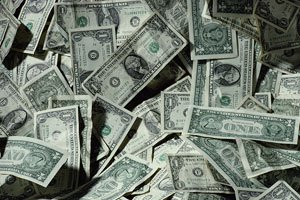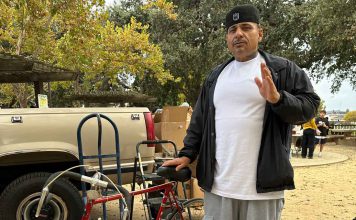Thanks to reduced construction costs and a detailed analysis of
the new library’s design, city officials expect to incorporate up
to $1.7 million in green building features while staying within
budget.
CORRECTION: Due to a reporter’s error, an earlier version of this story falsely stated that a sophisticated drainage and irrigation system could save the city between $1.2 million and $2.4 million a year in water bills. Those numbers should be $1,200 to $2,400 per year. (See table below story.)
Thanks to reduced construction costs and a detailed analysis of the new library’s design, city officials expect to incorporate up to $1.7 million in green building features while staying within budget.
From solar panels and irrigation systems that squeeze every drop of water from the building and its bathrooms to pervious concrete and motion sensors linked to light switches, city officials say Gilroy’s $37 million new library will be a green dream come true.
The council also recently established a Library Oversight Committee to receive quarterly updates and budget reports. The committee will include Council members Bob Dillon, Dion Bracco and Cat Tucker, one library commissioner, two members of the Measure F campaign that lobbied residents to approve the bond, and four members from the public who can file an application with City Clerk Shawna Freels at City Hall, 7351 Rosanna St., through July 2.
News that the building will meet the gold standards of Leadership in Energy & Environmental Design – a national nonprofit that certifies eco-friendly buildings as LEED Silver, Gold or Platinum – without going over budget also wiped away concerns that the council would forego higher standards in the name of money. In February, Gilroy became one of the last cities in Santa Clara County to adopt a green building policy for spacious public buildings, but the city council also approved a stopgap in its ordinance that exempts green compliance if it’s too expensive. At the time, council members said they didn’t want to tax property owners more than they promised.
“The total costs of the library project, including the recommended actions of this report, are within the current $37 million bond revenue approved by the voters,” City Engineer Rick Smelser wrote to council members earlier this month.
Good news, council members said, but Councilman Perry Woodward asked at the body’s June 8 meeting if perhaps the $37 million ballot measure over-quoted voters. Other council members, such as Bob Dillon, attributed the city’s fortune to deflated construction costs.
“There is never going to be a better time to build this library and get it out to bid,” Dillon said.
Final design will be done by September with bidding going out in the winter – “the best possible bid period,” Smelser said – so construction can begin in early 2010 and wrap up by 2013, including time off during the wet, winter months.
Officials expect actual construction to cost between $22 million and $24 million with the rest paying for fees, permits, construction management and other contractual services, according to city figures. While construction crews demolish the old building and construct the new, the library’s 1,200 daily patrons will have to make their way to Leavesley Road near Swanston Lane in north Gilroy to get books and use the Internet at a temporary site.
Los Angeles-based Harley Ellis Devereaux, Architects and Engineers have nearly finished the final design for the building that will replace the city’s tired, crowded and dilapidated library at the corner of Rosanna and Sixth streets, built when Gerald Ford was still in the White House. The council hired the firm in April for nearly $100,000 to finish the last 10 percent of the design it nearly completed in 2000.
During the past few months, the designers have been looking at updated codes and energy needs, creating colorful thermal map and climate analyses. In May, the firm reported very few changes were needed to bring the initial design up to LEED Silver, but reaching Gold required enhancing storm water management, natural day lighting and air conditioning systems at an extra cost of $350,000 to $600,000 on top of the $880,000 to $1.1 million in capital costs already included to certify the building.
Some of the green features that will be included in the library:
– Bicycle storage room and full bathrooms with showers for library employees
-Cost: $50,000 – $100,000
-Ongoing savings: $0
– Subsurface drainage and irrigation system that also uses lavatory and shower runoff
Cost: $100,000 – $150,000
Ongoing savings: $1,200 – $2,400 per year (based on 750 to 1,500 gallons of saved irrigation water per day at $4.43 per 1000 gallons)
– Solar panels to generate about 92 KW
Cost: $900,000 to $1 million (with potential $170,000 state rebate)
Ongoing savings: 22% reduction in projected energy costs, or about $38,000 a year (based on usage of 920 kWh for 50 hours per week at 16 cents per kWh)
– Increased ventilation, composite wood and agri-fiber products along with less toxic paints and maximizing daylight to illuminate the building
Cost: $150,000 to $250,000
Ongoing savings: $0
– Total “life cycle savings” can reach up to 20 percent of construction cost, or $7.4 million, over the course of the building’s operation
Source: City of Gilroy Community Development Department, Santa Clara County Cities Association Green Building Collaborative, PG&E















